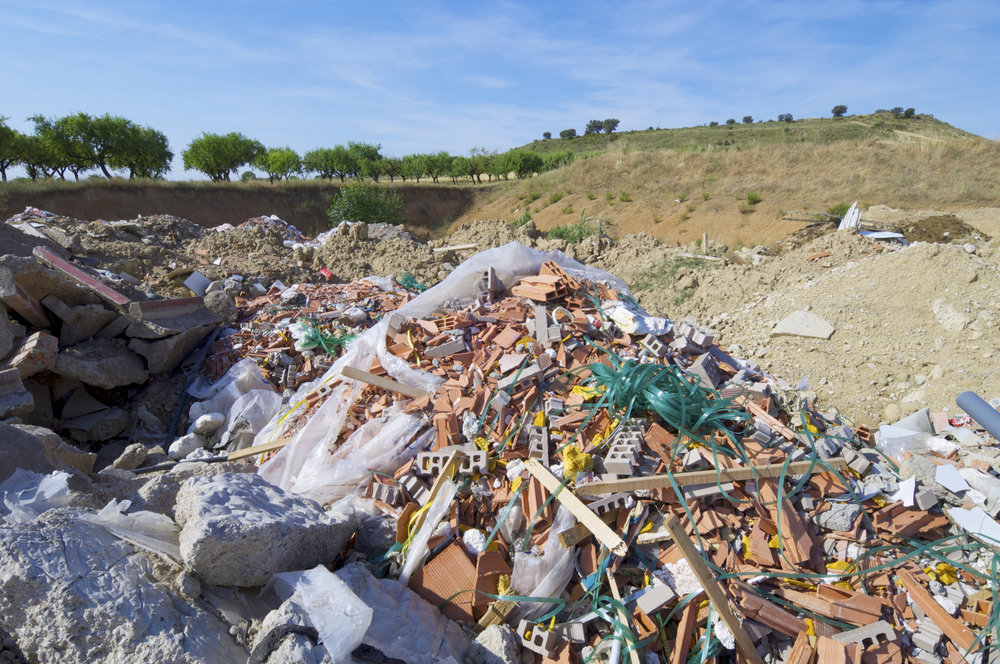Environment: Environmental Issues
Spain, like many countries, faces a variety of environmental challenges. Some of the most pressing issues include:
- Air Pollution: Air pollution is a major problem in Spanish cities, particularly in Madrid and Barcelona. The main sources of pollution are transportation and industrial activities.
- Water Scarcity: Spain is one of the most water-stressed countries in Europe due to a combination of climate change and increased water demand. The situation is particularly acute in the southeast of the country.
- Waste Management: Spain generates a significant amount of waste, much of which is not properly managed. Improper disposal of waste can lead to soil and water pollution.
- Deforestation: Spain has experienced significant deforestation in recent decades, particularly in the country's Mediterranean region. Deforestation can lead to soil erosion, loss of habitat for wildlife, and reduced water retention in the soil.
- Biodiversity Loss: Spain is home to a rich variety of plant and animal species, but many of these are under threat from habitat loss and other environmental pressures.
- Coastal Erosion: Spain's coastline is threatened by a combination of factors, including sea-level rise, increased wave energy, and human activities such as coastal development.
In conclusion, Spain must address these environmental issues in order to ensure a sustainable future for its people and its natural resources.
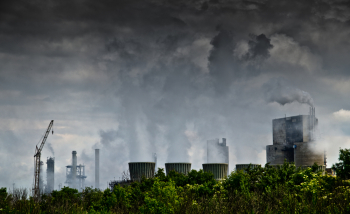
Air Pollution
Air pollution is a major environmental issue in Spain, particularly in cities like Madrid and Barcelona. The sources of air pollution include transportation, industrial activities, and energy production. The effects of air pollution on the environment and human health are numerous and include:
- Impact on Respiratory Health: High levels of air pollution can lead to increased rates of respiratory problems, such as asthma and bronchitis. For example, a study found that the number of hospital admissions for asthma in Madrid increased on days with high levels of air pollution.
- Damage to Crops and Forests: Air pollution can also damage crops and forests, reducing yields and harming the environment. For instance, high levels of ozone pollution in southern Spain have been linked to reduced crop yields and tree growth.
- Acid Rain: Air pollution can also lead to the formation of acid rain, which can damage ecosystems and harm wildlife. For example, in Spain, acid rain has been reported in areas near industrial and mining activities, causing soil and water pollution.
- Impact on Wildlife: Air pollution can also have negative impacts on wildlife, including reduced reproductive success and altered migration patterns. For example, studies have found that birds in heavily polluted areas of Spain have lower reproductive success and altered migration patterns.
- Soil Contamination: Air pollution can also contribute to soil contamination, leading to reduced soil fertility and decreased biodiversity. For example, in Spain, soil contamination from air pollution has been reported near industrial sites and transportation corridors.
- Reduced Visibility: Air pollution can also lead to reduced visibility, affecting both human activities and wildlife. For example, high levels of air pollution in Madrid have been linked to decreased visibility and reduced air quality, affecting public health and the environment.
In conclusion, air pollution is a major environmental issue in Spain that has far-reaching effects on human health, ecosystems, and wildlife. Addressing air pollution will require a concerted effort from government, industry, and individuals to reduce emissions and promote sustainable practices.
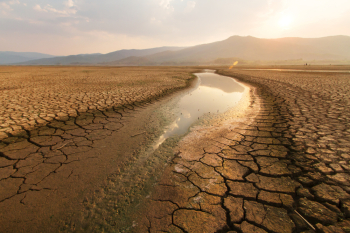
Water Scarcity
Spain is one of the most water-stressed countries in Europe, due to a combination of climate change and increased water demand. This has led to water scarcity, which has a number of impacts on the environment and local communities. Some of the specific effects of water scarcity in Spain include:
- Agricultural Drought: Drought conditions in Spain have had a significant impact on agriculture, reducing crop yields and causing significant economic losses. For example, in 2017, a drought in the southeast of Spain led to losses of over €1 billion for the agricultural sector.
- Wildfire Risk: Water scarcity has also increased the risk of wildfires in Spain, particularly in the country's Mediterranean region. For example, in the summer of 2017, a severe drought in eastern Spain contributed to the spread of multiple large wildfires.
- Decline in Water-Dependent Ecosystems: Water scarcity can also lead to the decline of water-dependent ecosystems, such as rivers, wetlands, and coastal lagoons. For example, in southeastern Spain, declining water levels have contributed to the loss of wetland habitats for migratory birds.
- Reduced Hydropower Generation: Water scarcity can also reduce the amount of hydropower that can be generated, affecting energy supplies and the economy. For instance, in 2019, reduced water levels in the Segura River basin led to a decrease in hydropower generation and increased energy costs.
- Water Resource Conflicts: Water scarcity can also lead to conflicts between different users, such as farmers, urban populations, and industry. For example, in recent years, there have been disputes over water allocation in southern Spain between farmers and cities, as well as between different regions of the country.
- Impacts on Public Health: Water scarcity can also have negative impacts on public health, particularly in rural areas where access to safe drinking water may be limited. For example, in some rural areas of Spain, water scarcity has led to the use of unsafe or untreated water sources, increasing the risk of waterborne diseases.
In conclusion, water scarcity is a major environmental issue in Spain that is affecting the country's environment, economy, and communities. Addressing water scarcity will require a combination of measures, including increased water conservation, improved water management, and investment in water infrastructure.
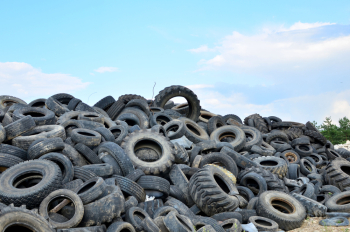
Waste Management
Waste management is a critical issue in Spain, with the country facing challenges in reducing the amount of waste generated and properly disposing of the waste that is produced. The improper management of waste has a number of impacts on the environment, including:
- Landfill Contamination: Landfills can leak pollutants into the soil and groundwater, contaminating the environment and potentially affecting human health. For example, the Cortijo de Greco landfill in Andalusia, Spain, has been identified as a source of groundwater contamination, posing a risk to nearby communities.
- Air Pollution: Landfills can also emit greenhouse gases and other pollutants into the air, contributing to air pollution and climate change. For instance, the La Cartuja landfill in Valencia, Spain, has been identified as a major source of methane emissions, contributing to air pollution and global warming.
- Marine Litter: Improper waste management can also lead to the release of waste into the ocean, causing marine litter and harm to marine life. For example, litter from rivers and coastal areas in Spain has been found in the Mediterranean Sea, affecting wildlife and habitats.
- Soil Degradation: Improper waste management can also lead to soil degradation, as waste is often dumped in areas where it can interfere with soil health and fertility. For instance, illegal dumping of waste in rural areas of Spain has been reported to lead to soil degradation and reduced agricultural productivity.
- Biodiversity Loss: Improper waste management can also lead to the loss of wildlife habitats and biodiversity, as waste can interfere with ecosystems and wildlife. For example, the dumping of waste in wetlands and other habitats in Spain has been reported to have negative impacts on wildlife populations and habitats.
- Human Health Risks: Improper waste management can also pose risks to human health, as waste can contain toxic materials that can leach into the environment. For example, the inadequate disposal of electronic waste in Spain has been linked to the release of toxic chemicals into the environment, posing risks to human health.
In conclusion, waste management is a pressing issue in Spain, with the improper management of waste having significant impacts on the environment and human health. Addressing waste management will require a combination of measures, including reducing waste generation, improving waste management practices, and investing in sustainable waste management systems.

Deforestation
Deforestation is a major environmental issue in Spain, as the country has experienced significant loss of forests due to human activities such as agriculture, urbanization, and the expansion of infrastructure. The impacts of deforestation in Spain are wide-ranging and include:
- Loss of Biodiversity: Deforestation can lead to the loss of wildlife habitats and biodiversity, as forests provide habitat for a variety of plant and animal species. For example, deforestation in the Mediterranean region of Spain has resulted in the loss of habitats for the Iberian lynx, one of the world's most endangered species.
- Soil Erosion: Deforestation can also lead to soil erosion, as trees play a critical role in stabilizing soils and preventing erosion. For instance, the deforestation of steep slopes in the Pyrenees Mountains of Spain has resulted in increased soil erosion and degradation of the landscape.
- Water Cycle Disruption: Forests play a critical role in the water cycle, as they absorb water and release it into the atmosphere. Deforestation can disrupt the water cycle, leading to reduced water availability and increased risk of drought. For example, deforestation in the arid regions of Spain has contributed to reduced water availability and increased risk of drought.
- Climate Change: Forests play a critical role in the carbon cycle, as they absorb carbon dioxide from the atmosphere. Deforestation releases this stored carbon into the atmosphere, contributing to climate change. For instance, deforestation in the central region of Spain has contributed to increased carbon dioxide emissions and heightened climate change risks.
- Floods: Forests play a critical role in reducing the risk of floods, as they absorb and retain water, reducing the risk of runoff and floods. Deforestation can increase the risk of floods, as the absence of trees can result in increased runoff and more frequent and severe floods. For example, deforestation in the northern region of Spain has contributed to increased risk of floods and landslides.
- Reduced Recreation Opportunities: Forests provide important recreation opportunities, including hiking, camping, and bird watching. Deforestation can reduce these recreation opportunities and limit access to nature for local communities. For instance, deforestation in the southern region of Spain has reduced recreation opportunities and limited access to nature for local communities.
In conclusion, deforestation is a major environmental issue in Spain, with significant impacts on the environment and human well-being. Addressing deforestation will require a combination of measures, including reforestation, better forest management practices, and policies to protect forests and promote sustainable land use practices.

Biodiversity Loss
Biodiversity loss is a major environmental issue in Spain, as the country is home to a rich variety of plant and animal species, many of which are under threat due to human activities such as habitat destruction, overfishing, and pollution. The impacts of biodiversity loss in Spain are wide-ranging and include:
- Loss of Ecosystem Services: Biodiversity loss can lead to the loss of ecosystem services, such as pollination, pest control, and water purification, which are essential for human well-being and economic prosperity. For example, the decline of bee populations in Spain has contributed to reduced pollination and reduced crop yields.
- Decline in Commercial and Recreational Fishing: Biodiversity loss can also lead to the decline of commercial and recreational fishing, as overfishing and habitat destruction can reduce the populations of fish and other aquatic species. For instance, the decline of fish populations in the Mediterranean Sea due to overfishing has reduced commercial and recreational fishing opportunities in the region.
- Reduced Recreational Opportunities: Biodiversity loss can reduce recreational opportunities, as it limits access to nature and reduces the availability of wildlife for observation and enjoyment. For example, the decline of bird populations in the wetlands of Spain has reduced bird watching opportunities for local communities.
- Increased Risk of Disease Outbreaks: Biodiversity loss can increase the risk of disease outbreaks, as the decline of wildlife populations can create new opportunities for the transmission of diseases from wildlife to humans. For instance, the decline of bat populations in Spain has increased the risk of disease transmission, including the spread of bat-borne diseases such as rabies.
- Loss of Cultural and Spiritual Values: Biodiversity loss can also result in the loss of cultural and spiritual values, as local communities may depend on particular species or ecosystems for their cultural and spiritual identity. For example, the decline of traditional livestock breeds in Spain has resulted in the loss of cultural and spiritual values associated with these breeds.
- Increased Vulnerability to Climate Change: Biodiversity loss can also increase vulnerability to climate change, as declining populations of plant and animal species may have reduced ability to adapt to changing climate conditions. For instance, the decline of species in the arid regions of Spain due to climate change has increased vulnerability to future climate impacts, including water scarcity and reduced crop yields.
In conclusion, biodiversity loss is a major environmental issue in Spain, with significant impacts on the environment and human well-being. Addressing biodiversity loss will require a combination of measures, including habitat protection and restoration, sustainable fishing practices, and policies to promote conservation and sustainable land use practices.
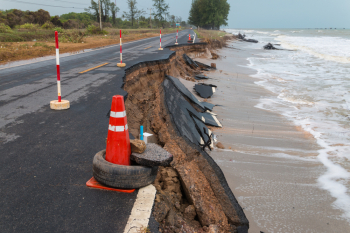
Coastal Erosion
Coastal erosion is a growing problem in Spain, as rising sea levels and increased human activities along the coast contribute to the degradation of coastal ecosystems and the loss of valuable land. The impacts of coastal erosion in Spain include:
- Loss of Coastal Habitats and Ecosystems: Coastal erosion can lead to the loss of valuable habitats and ecosystems, such as salt marshes, sandy beaches, and dunes, which provide important habitat for a variety of plant and animal species. For example, the loss of salt marshes along the Mediterranean coast of Spain has led to the decline of bird populations and other wildlife.
- Impacts on Human Communities: Coastal erosion can have significant impacts on human communities, including the loss of homes and infrastructure, reduced access to the beach, and decreased property values. For instance, the loss of homes and infrastructure due to coastal erosion in the Catalonia region of Spain has affected local communities and reduced access to the beach.
- Reduced Tourism and Recreation: Coastal erosion can also reduce tourism and recreation opportunities, as it can result in the loss of beaches and other attractions that are popular with tourists. For example, the loss of sandy beaches due to coastal erosion in the Balearic Islands of Spain has reduced recreational opportunities for local communities and tourists.
- Impacts on Economic Activities: Coastal erosion can also impact economic activities, such as fishing and maritime transportation, by reducing access to the coast and reducing the availability of important habitats and resources. For instance, the loss of fish habitats due to coastal erosion in the Galicia region of Spain has reduced the productivity of the local fishing industry.
- Impacts on Coastal Defense and Flood Protection: Coastal erosion can also impact coastal defense and flood protection, as it can reduce the effectiveness of coastal defenses, such as seawalls and dikes, and increase the risk of coastal flooding. For example, the loss of coastal habitats due to erosion in the Valencian Community of Spain has reduced the effectiveness of coastal defenses and increased the risk of coastal flooding.
- Loss of Cultural Heritage: Coastal erosion can also result in the loss of cultural heritage, as it can impact historic sites, monuments, and other cultural assets that are located along the coast. For instance, the loss of historic sites due to coastal erosion in the Basque Country of Spain has impacted the cultural heritage of local communities.
In conclusion, coastal erosion is a growing problem in Spain, with significant impacts on the environment and human well-being. Addressing coastal erosion will require a combination of measures, including coastal defense and flood protection measures, sustainable land use practices, and policies to promote coastal conservation and restoration.
Copyright © 1993—2024 World Trade Press. All rights reserved.

 Spain
Spain 